Motorsport author Eoin Young said that Bruce McLaren had "virtually penned his own epitaph" in his 1964 book “From the Cockpit”. Referring to the death of teammate Timmy Mayer, McLaren had written: “the news that he had died instantly was a terrible shock to all of us, but who is to say that he had not seen more, done more and learned more in his few years than many people do in a lifetime? To do something well is so worthwhile that to die trying to do it better cannot be foolhardy. It would be a waste of life to do nothing with one's ability, for I feel that life is measured in achievement, not in years alone”.
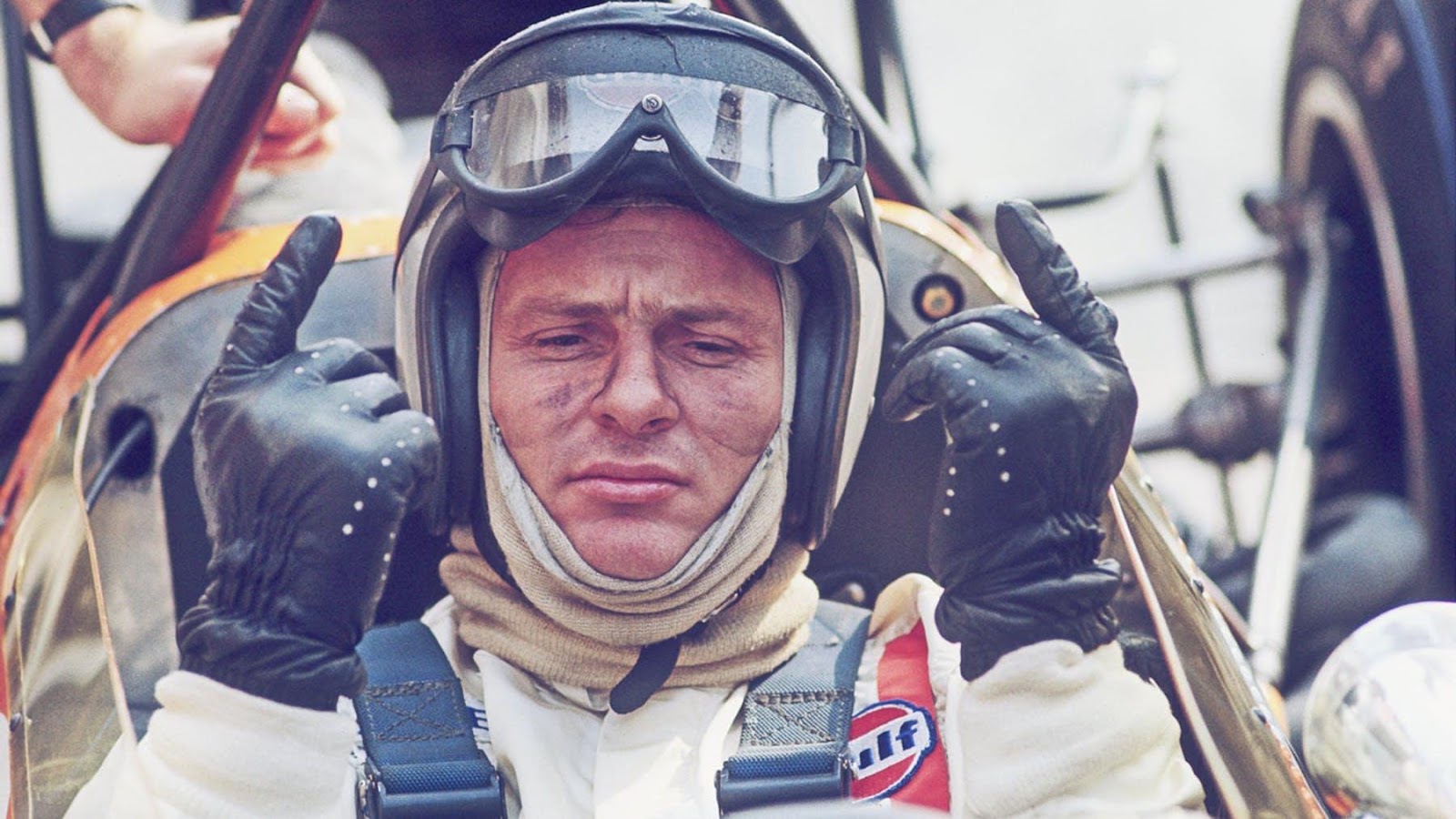
Bruce McLaren, the summary of motorsport. Driver, team owner, designer and engineer, a worldwide success at 30 and a legend death at 32. A bright comet with an extremely long trail that goes all the way to this day. Today his name races and wins on tracks in the world, one of the greatest. Perpetual example of passion, dedication, competence, strength, success and courage.
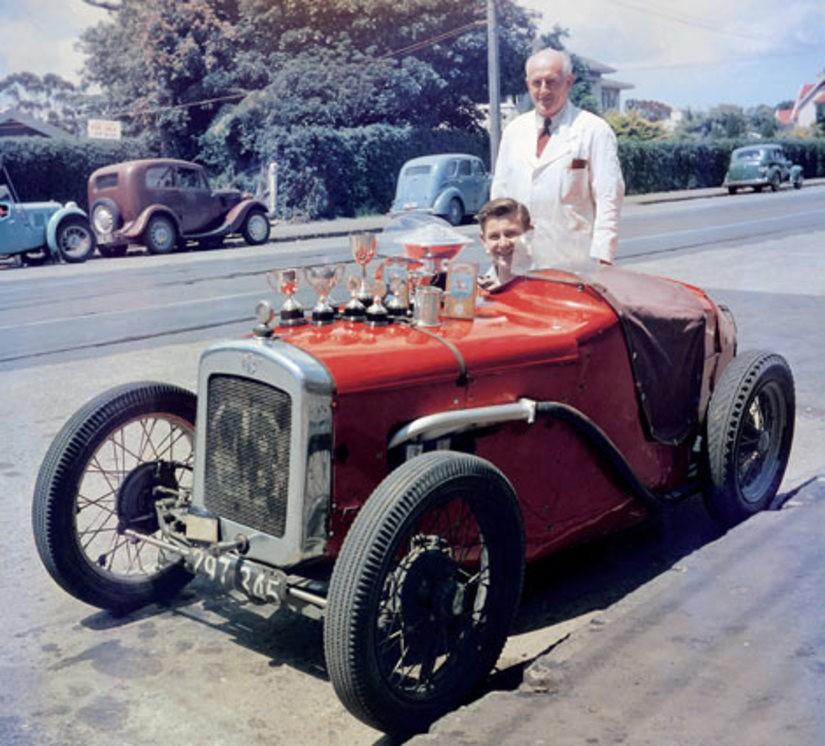
Old photographs of Bruce McLaren show a young man, his face either smeared with the oil and dirt of the racetrack or creased into a warm, disarming smile. And while all who knew him talk of his simple nature and affability, they also mention his irrepressible drive and mesmerising charisma. “If Bruce had walked into the workshop one morning and told us we were all going to march across the Sahara Desert, we’d have immediately downed our tools and followed him”, remembers Howden Ganley, a fellow New Zealander who worked for Bruce in the early days before forging his own successful motorsport career. By all accounts, that’s no exaggeration. Perhaps Bruce’s sheer determination stemmed from his childhood. Waterskiing was one of his favourite sports. Aged nine, he spent two long years in traction battling Perthe’s Disease, an illness which left him with one leg longer than the other and a permanent limp. It was to be no hindrance to his career. From local hillclimbs and club races in and around his native Auckland, he earned a bursary to Europe where he raced for the Cooper Formula 1 team.
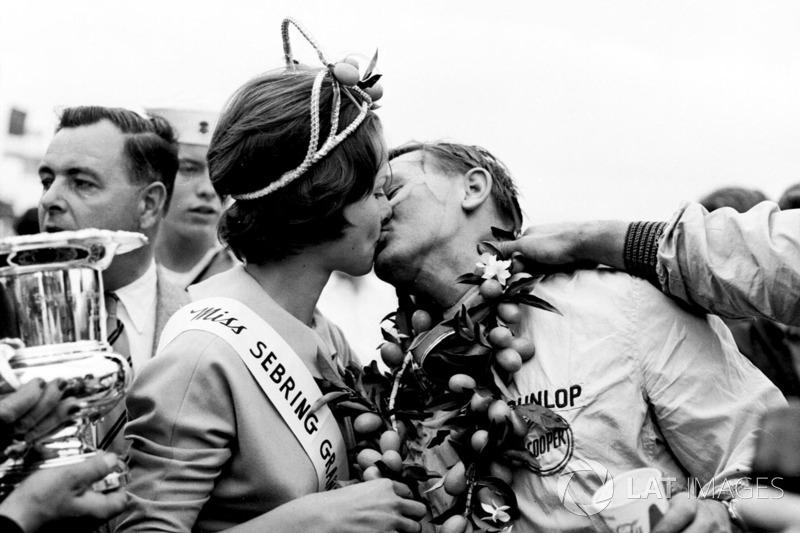
F1 United States GP 1959, Bruce McLaren Cooper-Climax.
He won his first grand prix in 1959, at the tender age of 22, becoming the sport’s youngest-ever winner – a record that astonishingly would not be surpassed until the 2003 Hungarian Grand Prix. With his restless ambition, he soon founded his own team, Bruce McLaren Motor Racing Ltd, in 1963, and took the marque into grand prix racing in 1966. McLaren’s Formula 1 effort was immediately respected for its solid engineering prowess and fun, no-nonsense attitude. The whole team clearly adored Bruce, who not only raced the cars and ran the team, but designed and engineered the cars, drove the transporter and swept the factory floor. As the boss, he led by example. In tandem with his Formula 1 ambitions, Bruce also built and raced sports cars.
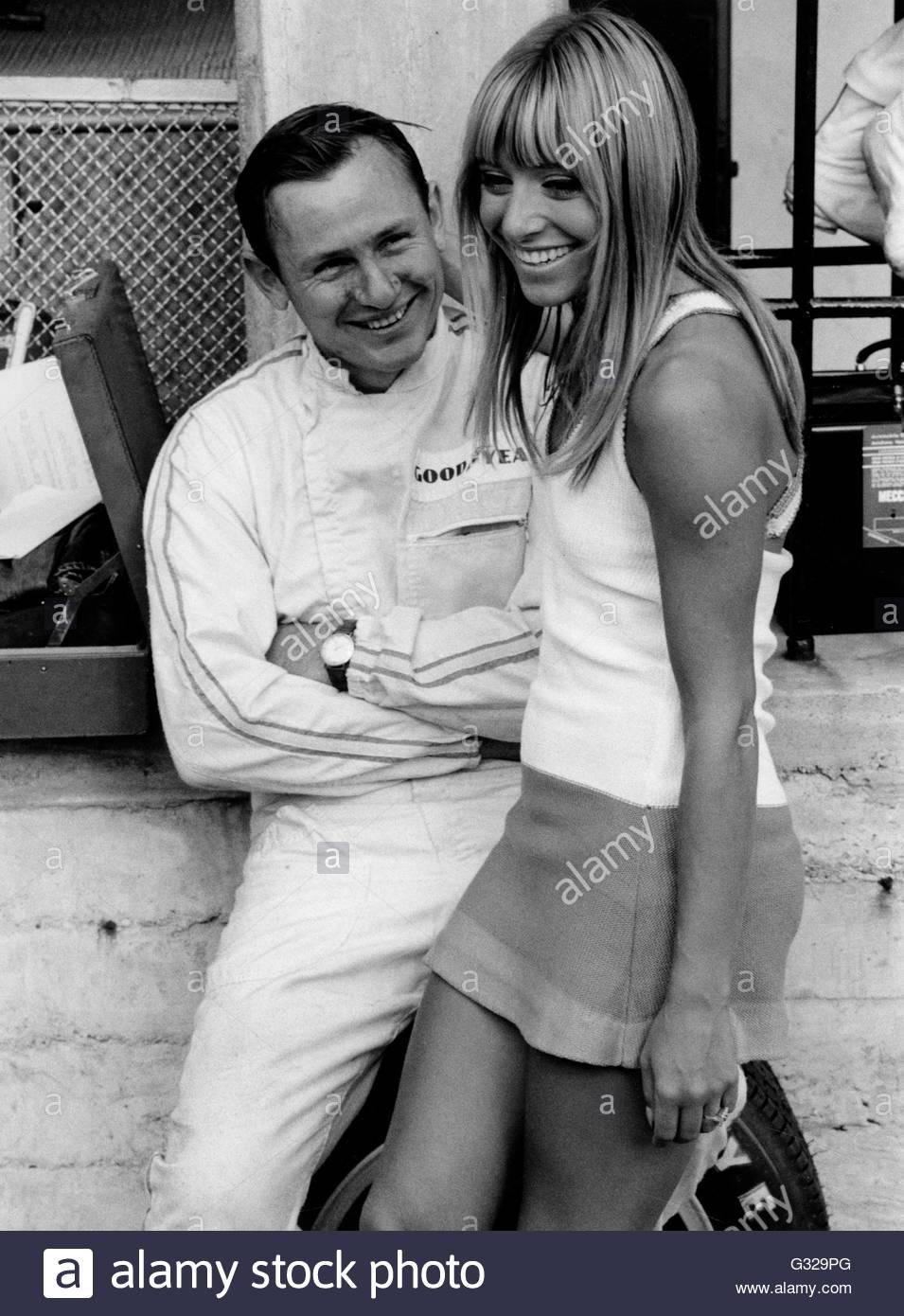
Bruce McLaren and admirer, 1967 Italian GP.
In 1966, he won the Le Mans 24 Hours in a Ford GT40 alongside Chris Amon, while his distinctive, orange, ear-splittlingly loud Can-Am cars dominated the popular North American series for years, earning the title for five successive seasons between 1967 and ’71.
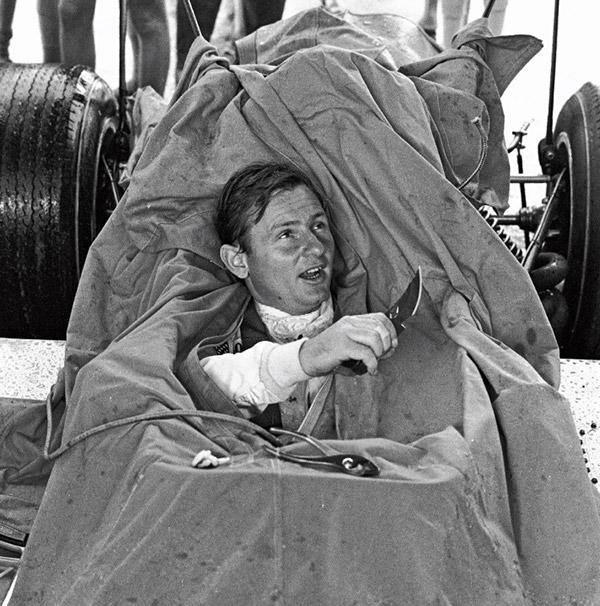
A well-armed Bruce McLaren emerges from a tarpaulin covering the M7 Formula One car during a rainy testing session at Brands Hatch in 1968.
In 1968, Bruce took the first of the McLaren marque’s 182 Formula 1 wins – an achievement second only to Ferrari in grand prix racing’s all-time victory list. More would quickly follow, as Denny Hulme racked up two further victories before the end of the ’68 season. As his business developed on both sides of the Atlantic, including a first tentative stab at developing a McLaren road car business, Bruce looked at how he could throttle back his efforts in the cockpit in order to further grow the McLaren brand. At the beginning of the 1970 season, he confided in friends that he would hang up his helmet at the end of the year and focus all his efforts on the business. Bruce McLaren died (aged 32) when his thunderous Can-Am car crashed on the Lavant Straight just before Woodcote corner at Goodwood Circuit in England on 2 June 1970. He had been testing his new M8D when the rear bodywork came adrift at speed. The loss of aerodynamic downforce destabilised the car, which spun, left the track, and hit a bunker used as a flag station. Bruce was killed instantly. With the motor racing world still in shock, and with the shattered McLaren team slowly picking up the pieces, the grieving mechanics grimly packed up two Can-Am cars for that season-opener in Canada. Despite the heartbreak, and the stinging pain of their loss, the team did what only it could… It went racing. And it won.
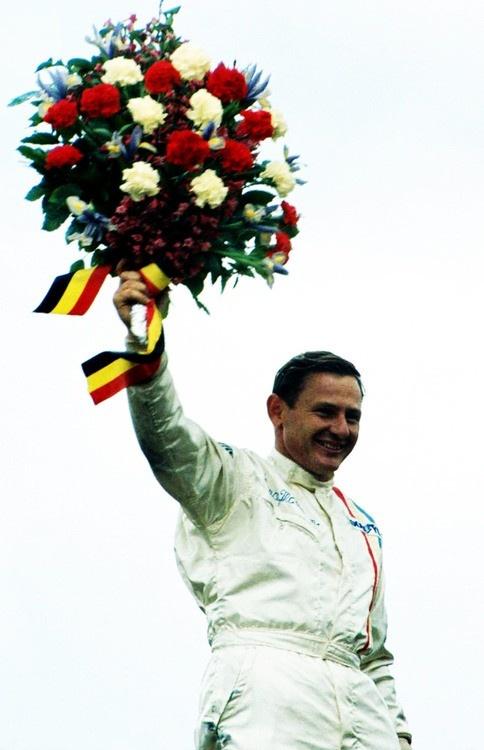
Bruce Leslie McLaren (30 August 1937 – 2 June 1970), born in Auckland - New Zealand, was a race-car designer, driver, engineer and inventor. His name lives on in the McLaren team which has been one of the most successful in Formula One championship history, winning a total of 8 World Constructors' Championships and 12 World Drivers' Championships. McLaren cars totally dominated CanAm sports car racing with 56 wins, a considerable number of them with him behind the wheel, between 1967 and 1972 (and five constructors' championships), and have won three Indianapolis 500 races, as well as the 24 Hours of Le Mans and 12 Hours of Sebring. Bruce attended Meadowbank Primary School. His parents, Les and Ruth McLaren, owned a service station and workshop in Remuera Rd, Remuera, Auckland; Les McLaren had been a motorcycle racing enthusiast, but gave that up due to an injury before Bruce's birth, and began racing cars at the club level instead. Bruce spent all of his free hours hanging around the workshop and developed his passion during his formative years. His earliest competitive driving experience came at the wheel of a modified 1929 Austin 7 Ulster. Bought in bits by his father who had planned to restore the car and sell it, 13-year-old Bruce convinced him they could turn it into a race car. Involved in every stage of the Ulster’s restoration, the experience proved vital for the future race car designer. In 1952, in his race-prepared Ulster, 15-year-old Bruce set the fastest time in the 750cc class at the Muriwai Beach hill climb. Two years later, he took part in his first real race and showed promise. He immediately began to modify and improve — and master — it, so much so that he was runner-up in the 1957–8 New Zealand championship series. In 1963 year, he founded Bruce McLaren Motor Racing Ltd, which remains in the Formula One championship simply as McLaren. McLaren continued to race and win in Coopers (including the New Zealand GP in 1964). McLaren left Cooper at the end of 1965, and announced his own GP racing team, with co-driver and fellow Kiwi Chris Amon. Amon left in 1967 to drive for Ferrari. In 1968, McLaren was joined by another fellow Kiwi Denny Hulme, who had become world champion in 1967 with Brabham. McLaren took his fourth career win racing his own McLaren car at Spa in 1968, achieving the team's first Grand Prix win. Hulme won twice in the McLaren-Ford. The 1969 championship was also a success, with McLaren finishing third in the standings despite taking no wins. In tribute to his homeland, McLaren's cars featured the "speedy Kiwi" logo. For years Bruce McLaren remained one of the best drivers in the world. His popularity and enthusiasm for racing never diminished. What did change, however, was his ever-increasing influence over the world of motor racing. Bruce McLaren’s vision extended far beyond the driver's seat. Engineer, designer, inventor, tester, Bruce was an automotive genius. He is one of only two men ever to win a Grand Prix in a racing car bearing his name. When he tragically lost his life, the team were told not to come to work the next day. Racers to their core, every one of the team turned up for work, and just 12 days later two McLaren M8Ds were on the grid for the start of the Can-Am series. Dan Gurney was drafted in to replace Bruce. Despite having never driven the car before, Dan won the race. Denny Hulme, with bandaged hands after a fire in Indianapolis, finished third. In a glorious tribute to Bruce’s racing philosophy, the McLaren team won nine out of ten races that year. McLaren was a competitive driver, but his legacy, the McLaren Racing Team, stems from his abilities as an analyst, engineer, and manager. In the early days of McLaren sports cars, McLaren was testing and as he drove out of the pits, he noticed the fuel filler access door was flapping up and down as he drove. The current aerodynamic thinking was that it should have been pressed more firmly in place as the speed of the car increased. Instead, it bounced more vigorously as the speed increased. Instantly, his frustration at the sloppy work changed and he had an insight. Stopping in the pits, he grabbed a pair of shears, and started cutting the bodywork away behind the radiator. Climbing back in the car, he immediately began turning lap times faster than before. Later he explained, I was first angry that the filler door hadn't been properly closed but then I began to wonder why it wasn't being pressed down by the airflow. The only answer was that there had to be a source of higher pressure air under it than over it. From that session came the "nostrils" that have been a key McLaren design feature, including in the McLaren F1 road car.
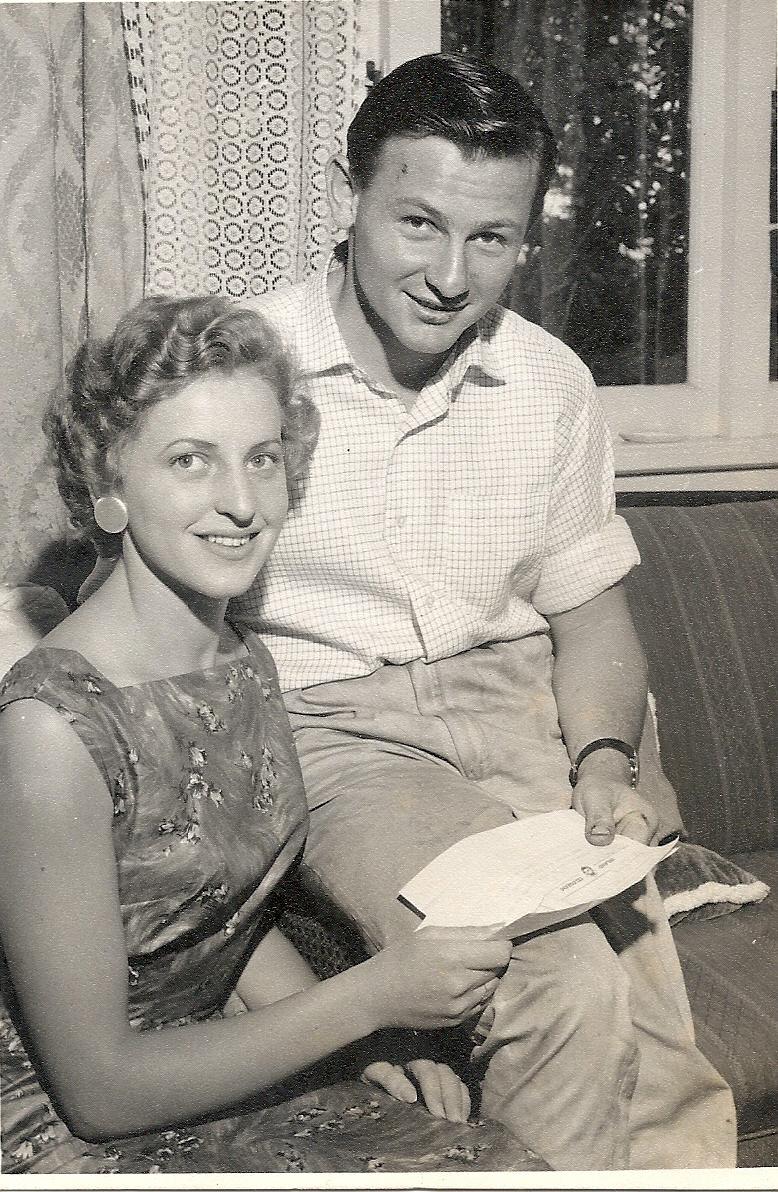
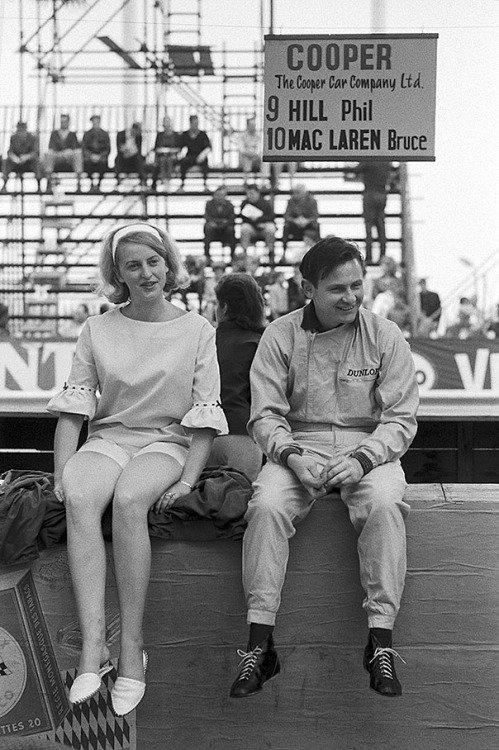
Patty Broad and her husband Bruce McLaren.
McLaren was survived by his sisters Pat and Jan, wife Patty and daughter Amanda. He was inducted into the New Zealand Sports Hall of Fame in 1990, into the International Motorsports Hall of Fame in 1991 and into the Motorsports Hall of Fame of America in 1995.
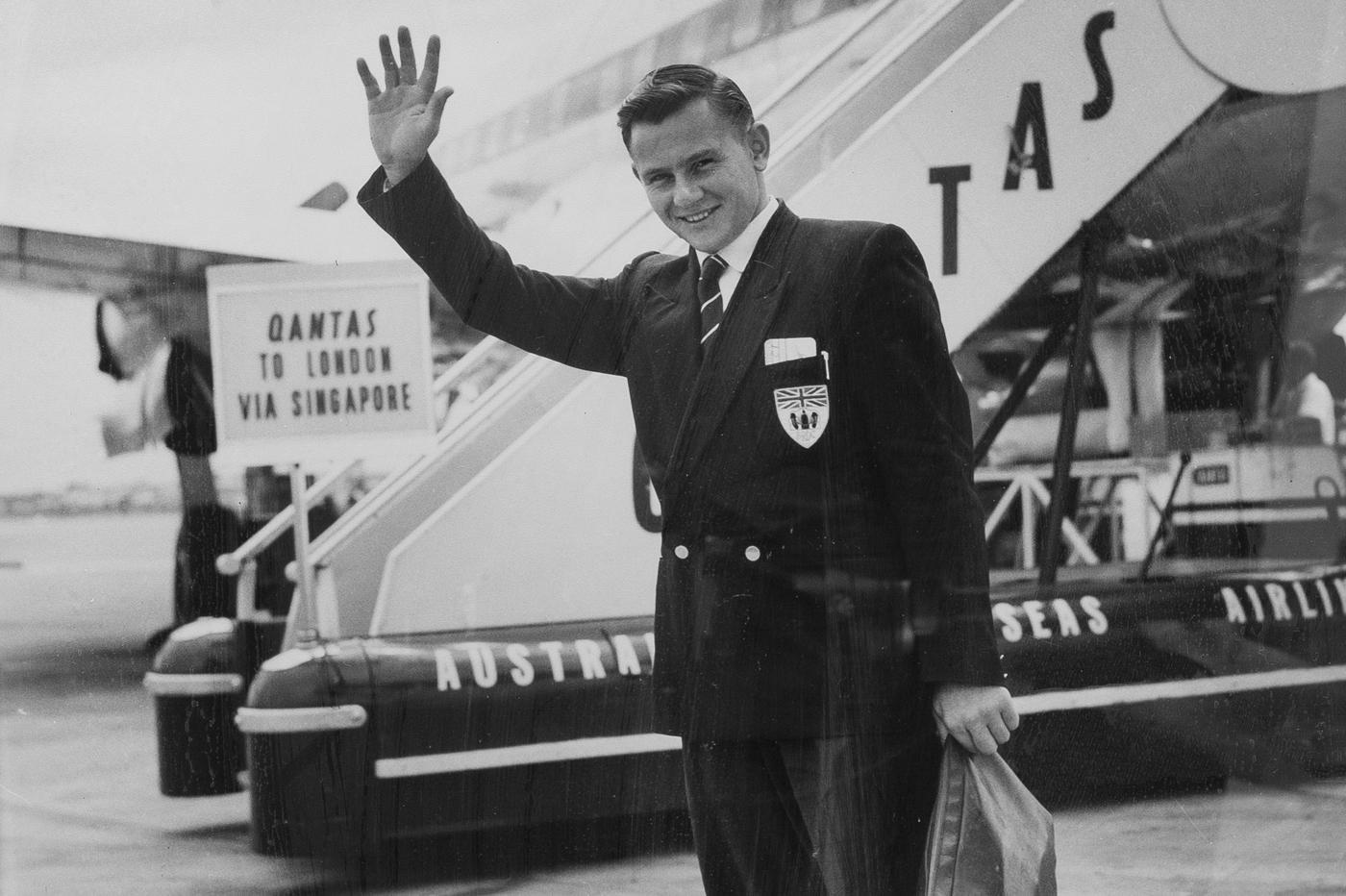
Bruce McLaren took the essence of the New Zealand Edge. He believed in his racing car factory "success depends on the highest standards". In the 1960s and 70s it was New Zealanders Denny Hulme and Bruce McLaren himself who drove the McLaren cars to victory; in the 1980s it was Alain Prost; in the 1990s the great Ayrton Senna; and in 1998 and 1999 it was Mika Hakkinen. The best and fastest drivers have always been attracted to McLaren – Hunt, Lauda, Fittipaldi, Revson and Mass included. From “McLaren – A Racing History”, Geoffrey Williams writes: “just as Jackie Stewart came to personify the increasing professionalism, commercialism and safety consciousness of Grand Prix racing in the 1970s and similarly so with Ayrton Senna as the dedicated professional of the 1990s, Bruce McLaren typified the happy, often comradely spirit of earlier times. The most universally liked driver of his era, Bruce’s background suggested he may have something out of the ordinary to offer the sport”. McLaren says, in his own words: “With a truck full of boxes of spare parts and towing the Austin Ulster arriving at 8 Upland Road, my motor racing career had started. How Mum put up with Dad and me with her kitchen table covered in bits and pieces of the engine during meals I will never know. She used to say “If I gave them dry bread and water they wouldn’t have noticed”. It was in his parents’ classic Kiwi quarter acre backyard – figure 8s around the fruit trees – that McLaren learned to drive. Later – at local hill climbs, gymkhanas and sprint meetings – he learned the basics of racing. Says Richard Becht in the book “Champions of Speed”: “That was the early secret of Bruce McLaren’s success on a world scale. He learned to drive – and wipe out – as early as possible. He had his own car. He as good as had his own garage, not to mention he was engulfed in motor racing with his father still competing”. Another major factor in McLaren’s success, as with Chris Amon and Denny Hulme, was the New Zealand International Grand Prix. Existing between 1954 and 1969, it was popular on the international circuit, allowing European and American drivers to escape the northern winter. As Sterling Moss recalled, it let the big name teams get rid of their old hardware. “You could leave your old cars in New Zealand for the locals to buy and then we could get new ones for the new Grand Prix season. We were able to get rid of the crap at the end of the season. But that was a help to the drivers in New Zealand to have our cars. Absolutely”. McLaren graduated from his Ulster to a Ford 10 Special, to an Austin Healy, then a Cooper Climax Sports. With the improved cars came improved driver performance. By 1957, his wins on the domestic scene were enough for him to qualify for that year’s Grand Prix. The 1957 event is remembered as the race where McLaren first came to the attention of Australian legend Jack Brabham. While not winning the Grand Prix, McLaren did show enough promise to be selected for the New Zealand International Grand Prix organisation’s ‘Driver in Europe’ scheme; an initiative established to give local drivers year-round exposure to the best in the world. McLaren was the inaugural recipient, Chris Amon was another. Brabham was driving for the Cooper team and he persuaded them to give McLaren a spot. He was promised a workshop, a wage and a new Formula Two Cooper on arrival in England. His “new car” turned out to be a mass of pipes lying on the Cooper factory floor. He had to build it himself, from scratch; a skill not generally required of drivers. Those years in the Auckland service station workshop were immediately useful. What made McLaren a brilliant driver was a natural gift but also the New Zealand environment. Years of tricky hill climbs one weekend, then a flat circuit the next; having to mechanically improvise with old cars, learning how they worked and making them faster. His experience brought rapid results in Europe. McLaren’s performance in the 1958 German Grand Prix at Nurburgring confirmed his promising potential. This 14 mile, 170 corner track intimidated the most experienced drivers. The race combined both Formula One and Two; McLaren took the Formula Two chequered flag, with only four Formula One cars ahead of him. Charles Cooper promoted him to Formula One. By 1960, Coopers were the dream team. Jack Brabham, the seasoned campaigner, finished the year as number 1 driver in the world, and Bruce McLaren, the affable, laid-back Kiwi sensation, stood beside him at number 2; Sterling Moss, also with the Cooper team, came third. McLaren won the Argentinian Grand Prix that year. He had risen from obscurity to stardom in less than two seasons. McLaren would remain in the top 10 drivers in the world for the next 10 years. From “Champions of Speed” by Richard Becht: “It was never just the racing that McLaren longed for. It was the complete picture. There was the fascination and obsession with the cars themselves, the respect he had for them, the satisfaction he derived from working on them, and the absolutely thorough knowledge and understanding – the mechanical sympathy – he had for racing cars, or any car”. Bruce McLaren’s passion for cars didn’t stop at the racetrack. In his early days in England he favoured Jaguars. He lovingly cared for his brand new E-Type in 1961. By 1963, McLaren had become dissatisfied with the Cooper team’s development work. He was caught between loyalty to Charles Cooper, who had given him his start, and his own ambitions. Rather than seek out another team, he decided to follow Jack Brabham’s lead (who had formed his own team in 1962) and go out on his own. But between 1963 and 1966, McLaren continued to race for Cooper, and maintain his consistent top ten world placing, while at the same time designing his own car. At first the experiment proved frustrating. McLaren’s first Formula One chassis was excellent, but he was not able to match the body with an adequate engine. The first McLaren cars used under-powered Italian Serenissima engines, and in 1966, the first year a McLaren car raced, they were only able to achieve a 6th in the British Grand Prix. The McLaren racing programme accelerated with the addition of two factors. McLaren designer, Robin Herd, introduced the Ford Cosworth engine to the car; and McLaren enlisted the driving services of fellow New Zealander, World Champion Denny Hulme (1967, in a Brabham). Denny Hulme has been described as in many ways the archetypal New Zealander: quietly assertive and hard working. Chris Amon was the third man. In 1963, Amon had been the youngest ever driver in Formula One and he had become one of Enzo Ferrari’s personal favourites. In 1964, he accepted McLaren’s offer to test cars for his fledging team. The McLaren/Hulme/Amon combination was to dominate world motor racing in the late 1960s. The three Kiwis had many moments of glory on the American and European race tracks, the most symbolic being McLaren’s win at the 1968 Belgium Grand Prix in the Ford-Cosworth powered M7A that bore his name. Doug Nye’s story of that race, records that Spa-Francorchamps’ Circuit National “is perhaps the most classical Grand Prix venue of them all. Spa takes no prisoners – a 270 kph tremor. To win there, is to climb motor racing Everest. What a place, then, for a team to gain its first championship Grand Prix victory”. McLaren had won, but didn’t know it. Nye quotes McLaren: “It’s about the nicest thing I’ve ever been told. Jackie [Stewart] had stopped at the pits for fuel starting the last lap and I hadn’t seen him as he went by. I had won without realising it…”.
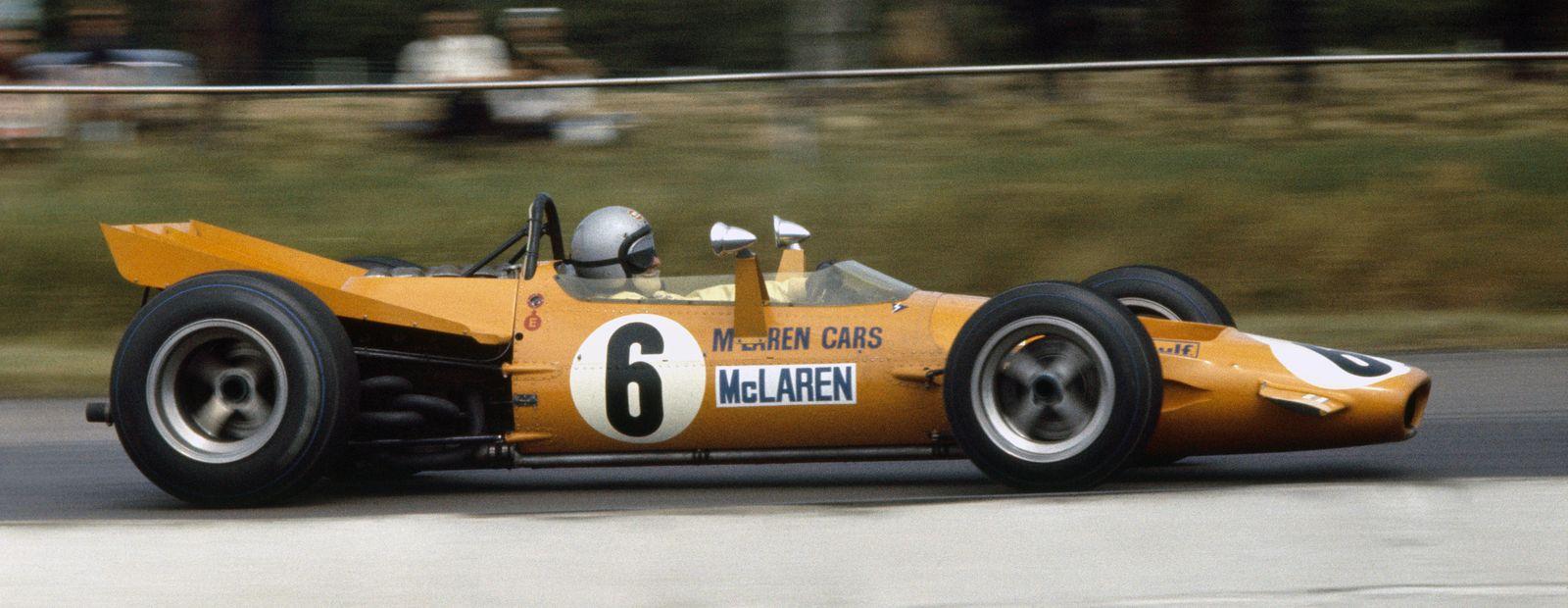
Bruce McLaren at Silverstone.
One of his most memorable wins was the Daily Express race at Silverstone in 1968 when McLaren and Hulme came in first and second in their McLaren cars and Amon came third in his Ferrari. McLarens were to dominate motor racing for the next two years, and not just Formula One. McLaren was Can Am Champion in 1967 and 1969 in his own cars, Denny in 1968 and 1970. The McLaren Trust website recalls this era: “In these years cars of almost any innovation and imaginative design with supercharged 7-8 litre engines in a chassis with ultra-wide wheels and high wings, were allowed to run on the race tracks of North America. This was a period of beautifully designed cars driven by legendary drivers from all over the world. They came all for fun, glory and the largest purse in prize money in the world”. The US and Canada race series was nicknamed the ‘Bruce and Denny show’. The two men, one easy-going and likeable, the other solid but gruff, are described by Geoffrey Williams in McLaren – A Racing History: “…perhaps the most harmonious driving partnership of all time; that the Can Am series became known as the ‘Bruce and Denny show’ was not solely due to their hegemony, but also reflected their working relationship. In a sport, which is dominated by individuals’ egos, this was indeed a rare combination”. The McLaren team in the late 1960s was not created by a revolution. Its success was not from a flash of inspiration, or a momentary rush of brilliance. It came from McLaren’s engineering genius and pure enthusiasm for cars, and Hulme’s love of and excellence in driving. The team, and the men, were as big in the sport as anyone had ever been. The pair were at the height of their powers when disaster struck and Bruce died. It was 12.22 pm, June 2, 1970. His mother Ruth, in bed in Auckland, woke suddenly at the very moment of the crash. She sensed what had happened. A tragedy for the family, tragedy for motor racing, tragedy for New Zealand.
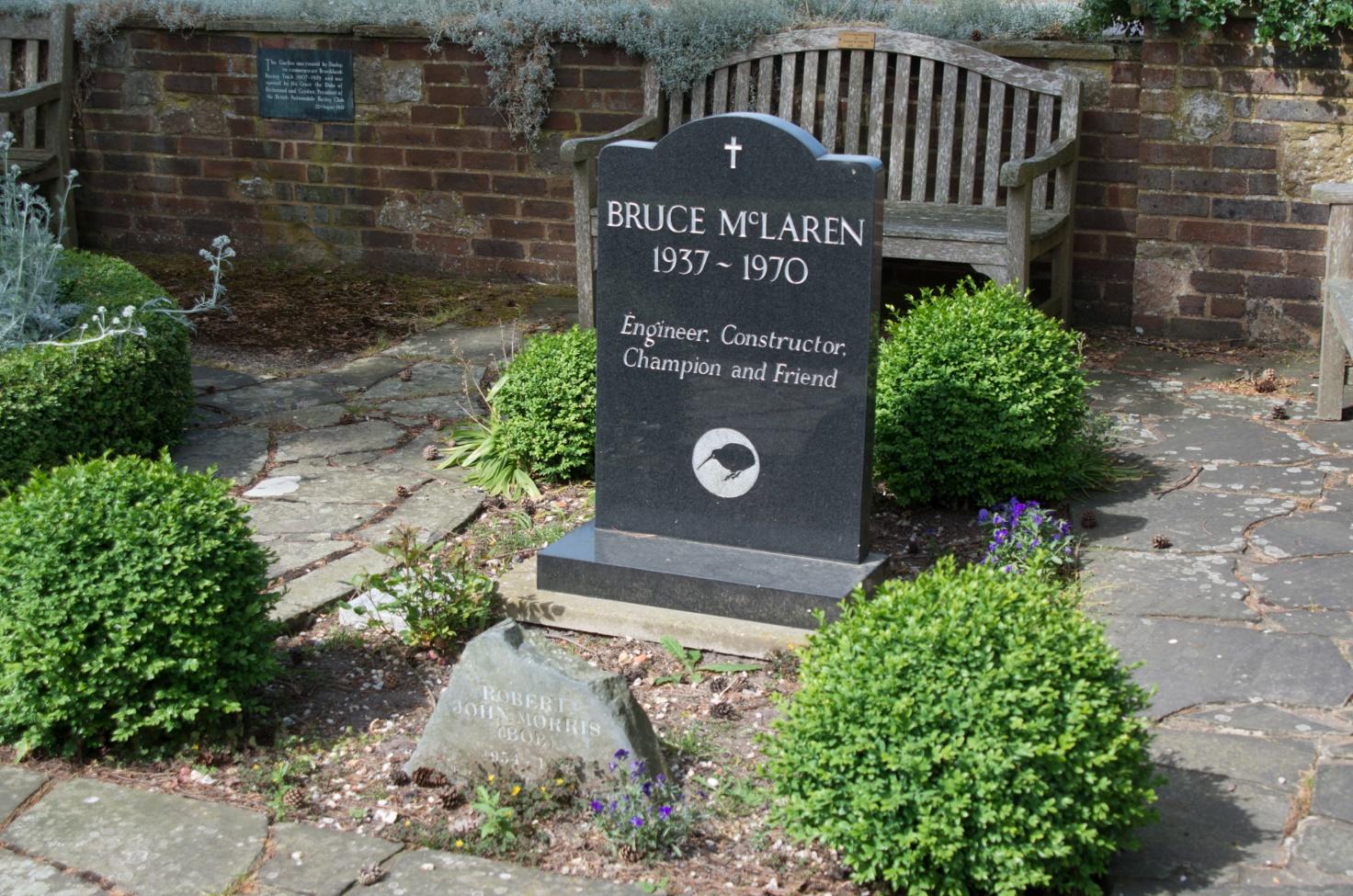
In a country where tinkering with an old car on a Saturday afternoon is a national past time, McLaren had become the most famous, and most successful, ‘tinkerer’ of them all. He had shown the exotic and glamorous world of international racing could be brought closer to the garages of suburban New Zealand through determination, innovative thinking, belief and a sheer love of what you are doing. Pete Lyons records, in the Motor Sports Hall of Fame, that Bruce McLaren was “universally well liked and remarkably self effacing”. He never claimed to be the world’s fastest driver and often smilingly discounted his own engineering ability. “Make it simple enough so even I can understand it”, he’d tell his team. But his own work at the drawing board and in the cockpit resulted in racing machines that vanquished all comers”. The success of McLaren, Hulme and Amon in taking on the world, the big teams with the big money, was an incredible feat. The modern company of McLaren International has evolved into a multi-billion dollar enterprise dedicated to winning in the most watched and most expensive of all sports, Formula One, and to producing limited edition high performance road vehicles. McLaren International is located in Woking, England, with expertise supplied by a 325 strong team of designers, engineers and skilled staff, complemented by advanced computer-aided design and manufacturing facilities. Championships have been won with the aid of Ford, TAG Porsche, Honda and Mercedes engines. By continuing to bear the founder’s name, they acknowledge the New Zealand inspiration for the company. Bruce McLaren made the ordinary become extraordinary. He took the basics of driving, construction and engineering, and perfected them. As Allan Dick tributes McLaren in Driver Magazine: “when you reach the level of driving needed to drive a Formula One car, every driver possesses skill that mere mortals will never begin to understand. Bruce McLaren had the added advantage of a keen mechanical and engineering mind that was married to a typical Kiwi do-it-yourself attitude”.
Videos



Comments
Authorize to comment